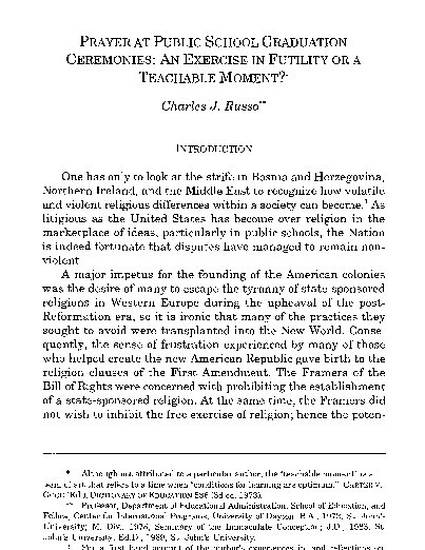
Due to conflicting lower court judgments on the propriety of prayer at public school graduation ceremonies, this question will return to the Supreme Court. This article is divided into three major sections. Part I briefly recites the history of the Establishment Clause and education. Part II examines case law relevant to prayer at public school graduation ceremonies. This section begins with a brief examination of the cases prior to Lee. It next reviews the majority and dissenting opinions in Lee in some detail to show how the diametrically opposed views of Justices Kennedy of the majority and Scalia of the dissent have helped to shape the parameters of post-Lee debate. Part II also discusses the tests employed by the Supreme Court and lower courts in evaluating school-sponsored prayer or religious activity. This section ends with a brief review of post-Lee lower court cases. Part III discusses questions related to how prayer at public school graduation ceremonies can be transformed into a teachable moment that allows all those gathered to develop a new sense of respect for an opinion other than their own. Part IV concludes that by permitting prayer at public school graduation ceremonies, the Supreme Court does not run the risk of establishing a state-sponsored religion; instead it leads the way in fostering a climate wherein divergent opinions are appreciated and even celebrated.
Available at: http://works.bepress.com/charles_russo/99/

This document has been made available for download in accordance with the publisher's self-archiving policy.
Permission documentation is on file.